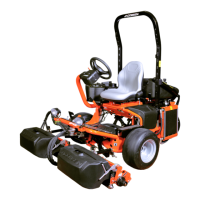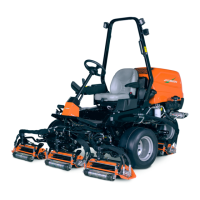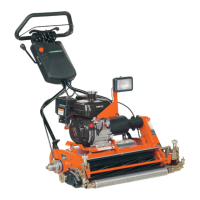HYDRAULICS
8M-61
7. Slowly push traction pedal forward and observe
pressure gauge.
8. Pressure should be 3500 psi (172 Bar).
Traction Circuit Pressure Test (Reverse)
9. Install wheel restraints on the front wheels.
10.Shut off the engine.
11.Remove the reverse pressure hose from the top of
the traction pump (Figure 8M-8).
Figure 8M-8. Reverse Pressure Hose
12.Install a tee fitting in the reverse pressure hose fit-
ting.
13.Install a 5000 psi (344 Bar) gauge onto the tee fit-
ting.
14.Start the engine and advance the throttle to full
rpm.
15.Slowly push traction pedal in reverse direction and
observe pressure gauge.
16.Pressure should be 3500 psi (172 Bar).
Conclusion
• If pressure cannot be obtained in both forward and
reverse directions, perform flow test on traction
pump and leakage test on wheel motors.
• If pressure cannot be obtained in forward direction
and is obtained in reverse direction, replace forward
high pressure relief valve in traction pump.
• If pressure cannot be obtained in reverse direction
and is obtained in forward direction, replace reverse
high pressure relief valve in traction pump.
Figure 8M-9. High Pressure Relief Valves
High Pressure Relief Valves
1. Shut off the engine.
Tee
Fitting
0 to 2000 psi
(0 to 13790 kPa)
Gauge
NOTICE
High pressure relief valves are identical and can be
swapped in the ports in the traction pump
(Figure 8M-9). When swapped, your symptom
should move from forward direction to reverse direc-
tion, if one of the high pressure relief valves is at
fault.
High Pressure
Relief Valves

